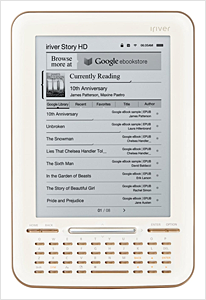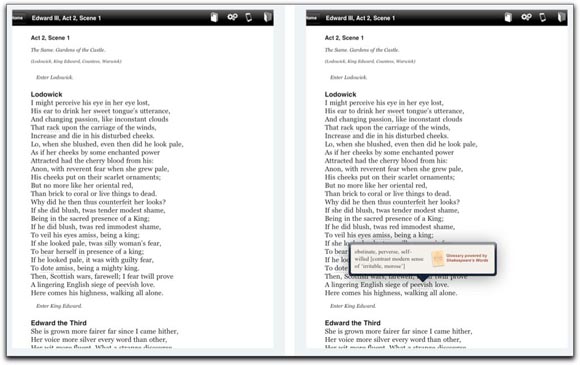Here’s a few highlights from this week’s publishing news. (Note: Some of these stories were previously published on Radar.)
Philly newspapers jump on tablet bandwagon
 Two newspapers announced plans this week to take a bold step into the digital era. Sister newspapers the Philadelphia Inquirer and the Philadelphia Daily News announced they’ll be selling discounted Android tablets, complete with built-in content, to subscribers in late August. (Note: models and pricing are yet to be determined — we’ll update as more information becomes available.)
Two newspapers announced plans this week to take a bold step into the digital era. Sister newspapers the Philadelphia Inquirer and the Philadelphia Daily News announced they’ll be selling discounted Android tablets, complete with built-in content, to subscribers in late August. (Note: models and pricing are yet to be determined — we’ll update as more information becomes available.)
In an interview with AdWeek, CEO and publisher of the Philadelphia Media Network Greg Osberg said the move will help the papers leverage digital content as well as give them data on how readers consume that content:
No one in the U.S. has bundled the device with content. We want to gain significant market share in this area, and we want to learn about consumer behavior. Our goal is to be the most innovative media company in the United States.
Implementing this type of project certainly will put them in the lead in terms of digital innovation in newspapers. The underlying idea isn’t completely new, however — Business Insider estimated in 2009 that the New York Times could buy a Kindle for all its subscribers and save money if it ceased print production. The Business Insider post pointed out, “that as a technology for delivering the news, newsprint isn’t just expensive and inefficient; it’s laughably so.”
As newsprint costs become increasingly laughable and inefficient, the Philadelphia test might just be a solid step toward the new “print” model for newspapers that they so badly need to survive.
 miniTOC Portland — Being held on Wednesday, July 27, 2011, miniTOC Portland will bring together art, business, craft and technology leaders for a day of collaboration in Portland, Ore.
miniTOC Portland — Being held on Wednesday, July 27, 2011, miniTOC Portland will bring together art, business, craft and technology leaders for a day of collaboration in Portland, Ore.
The Google eBookstore gets its first ereader platform
 Google and Iriver had a big week in publishing, too. Iriver launched its Story HD ereader, the first ereading platform to tap into the Google eBookstore. In a post for Google, Pratip Banerji, product manager at Google Books, said the Story HD launch is a milestone, but there’s more to come:
Google and Iriver had a big week in publishing, too. Iriver launched its Story HD ereader, the first ereading platform to tap into the Google eBookstore. In a post for Google, Pratip Banerji, product manager at Google Books, said the Story HD launch is a milestone, but there’s more to come:
We built the Google eBooks platform to be open to all publishers, retailers and manufacturers. Manufacturers like iriver can use Google Books APIs and services to connect their devices to the full Google eBooks catalog for out-of-the-box access to a complete ebookstore. You can also store your personal ebooks library in the cloud — picking up where you left off in any ebook you’re reading as you move from laptop to smartphone to e-reader to tablet.
The $139.99 device will be available on July 17 at U.S.-based Target stores.
The digital page eliminates footnote frustration
This is part of an ongoing series related to Peter Meyers’ project “Breaking the Page, Saving the Reader: A Buyer & Builder’s Guide to Digital Books.” We’ll be featuring additional material in the weeks ahead. (Note: This post originally appeared on A New Kind of Book. It’s republished with permission.)
Footnotes have got to be one of the more frustrating aspects of ebooks today. For starters, woe to the fat fingered among us who read on a touchscreen device. Even simply tapping the asterisk takes a couple jabs. Once you hit the tiny target, off you go to Footnote Land, the return from which depends on how well you understand your e-reader’s “Back” button system.
Even in print, getting readers to shift their attention from body text to note is a tough sell. Schlepping to the bottom of the page — or worse, the end of the book — takes time, disrupts focus, and offers rewards that appeal mainly to the PhD set.
Now, of course, dedicated readers are perfectly capable of taking these kinds of excursions and preserving their attention. Heck, nursing mothers plow through War and Peace amidst interruptions. But the point is: in an age of ever increasing distractions and info temptations, we need to minimize obstacles to good reading flow — especially those that occur within the document itself.
The flexibility of the digital page offers promise.
The Shakespeare Pro iPad app offers one nice approach:
The dotted underlines signal which words have available definitions. It’s noticeable but unobtrusive; nice. (The same couldn’t be said if instead we saw the classic blue web page link; the implicit message there is “I am a path to another document”). Having a touchscreen device is, of course, a key part of this design’s success. Assistance is provided, at a tap, at the point of need. Clearing the note requires as little conscious thought as blinking; tap anywhere outside the box and it goes away. And a one-touch icon (the slightly open paged book in the upper-right corner) lets readers toggle the links on and off.
- This story continues here
Related:

